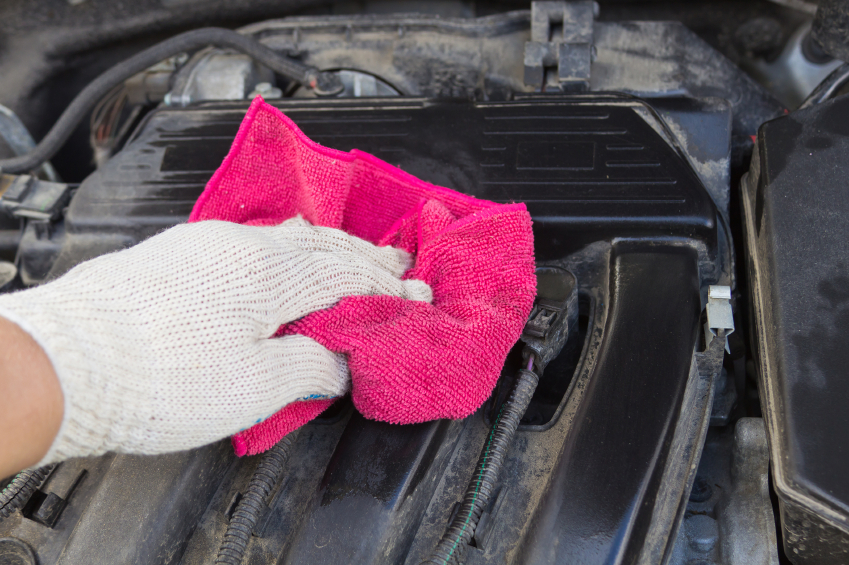
Can You Believe This Car Has Over 60,000 Miles on Its Odometer?
So, you washed your car interior and exterior and you are driving around town when your car suddenly starts to cough and sputter. Like any other machine, your car’s engine and its engine compartment also need cleaning in order for your car to run like it just rolled out of the showroom. Following are steps to follow on how to clean your car’s motor and its engine compartment.
How to Clean a Car Engine
Cleaning a car engine is not hard—it involves just a little elbow grease.
Step 1: Preparing the Engine for Cleaning
Try and remove any debris trapped in your grill, hood, or vent openings. If you have access to compressed air, the job is quick; if there is no easy access, not so much. All you need, though, is a small hand brush to do the job. Following debris removal, it is time for preparing the engine for getting wet. Cover sensors, exposed wiring, the distributor, and spark plug openings. Plastic baggies work well for this job and need only a little tape or rubber bands to stay put. You are not looking at making the engine waterproof, you just want to prevent most of the water from getting these items soaked. Actually, your engine is most likely waterproof from the factory – baggies are extra precautions.
Step 2: Loosen Accumulated Grease
Talk about an effortless step! Start your car and let it run 5-10 minutes. This loosens the accumulated grease and oil and other stuff stuck on the engine. In addition, a warm engine works well with degreaser products.
Step 3: Applying Engine Degreaser
Make sure you buy a water or citrus-based cleaner. Petroleum-based products work fast, but are also harsh and degrade rubber hoses and seals. Apply the degreaser from the bottom up so that while you are working on cleaning the engine, the degreaser won’t drip down on you. Also, keep in mind that if you overspray the degreaser it will remove the wax from your fenders. Cover them or spray very carefully so you don’t have to deal with re-waxing chores. After you apply the degreaser, hose off your fenders if they were not protected. Other areas that need hosing off include the hood and grille.
If your car engine is clean, let the degreaser soak in for about three minutes. Very dirty engines need five minutes for the degreaser to loosen everything. For moderate to light buildup, there is no need to use a hand brush. For heavy deposits, use a parts brush (it is long-handled) so you can easily reach all parts of the engine. When using the brush, use a little car wash solution so that the brush’s agitation has a little help in removing heavy soil before you hose down the engine.
Step 4: How to Wash a Car Engine
Once time is up for the degreaser, you have to hose it off. It is best not to use a high-pressure nozzle, as it may damage electrical connections even if you covered them. A regular garden hose with an adjustable nozzle set at “stream” will work well.
Step 5: Drying Your Engine
The heat from your engine helps it dry quickly. Never let your engine air dry as it spots. Instead, after a few minutes of letting the engine dry itself, wipe it down with a clean microfiber towel.
Tip – After you dry your engine, spray it with a brand-name engine cleaner. Wipe off any extra protectant and buff to a showroom shine.





